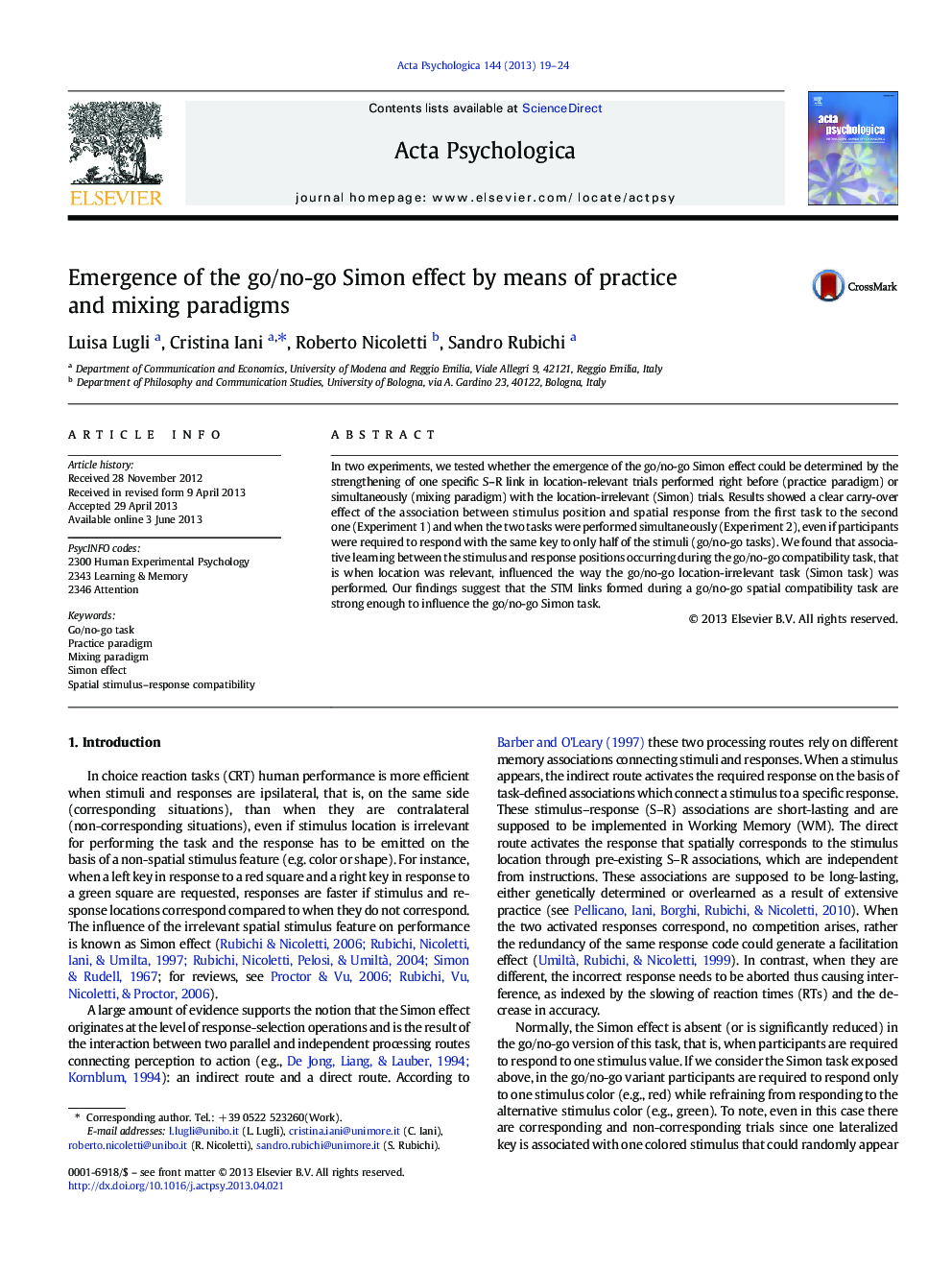| Article ID | Journal | Published Year | Pages | File Type |
|---|---|---|---|---|
| 919897 | Acta Psychologica | 2013 | 6 Pages |
•The emergence of the Simon effect in a go/no-go task can be modulated.•We found carry-over effects of the STM links from the first to the second task.•Spatial-relevant go/no-go STM links influenced the Simon go/no-go task.
In two experiments, we tested whether the emergence of the go/no-go Simon effect could be determined by the strengthening of one specific S–R link in location-relevant trials performed right before (practice paradigm) or simultaneously (mixing paradigm) with the location-irrelevant (Simon) trials. Results showed a clear carry-over effect of the association between stimulus position and spatial response from the first task to the second one (Experiment 1) and when the two tasks were performed simultaneously (Experiment 2), even if participants were required to respond with the same key to only half of the stimuli (go/no-go tasks). We found that associative learning between the stimulus and response positions occurring during the go/no-go compatibility task, that is when location was relevant, influenced the way the go/no-go location-irrelevant task (Simon task) was performed. Our findings suggest that the STM links formed during a go/no-go spatial compatibility task are strong enough to influence the go/no-go Simon task.
